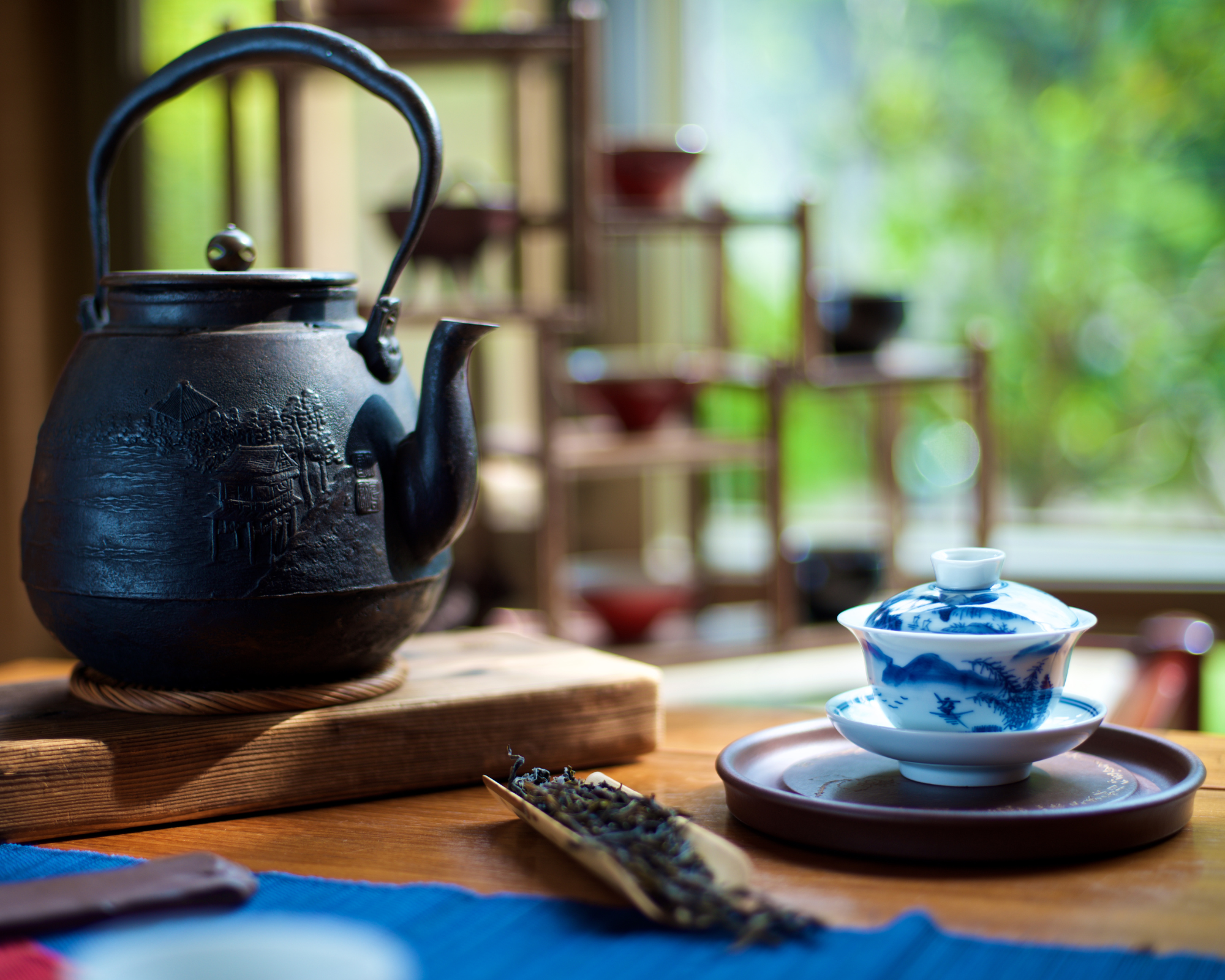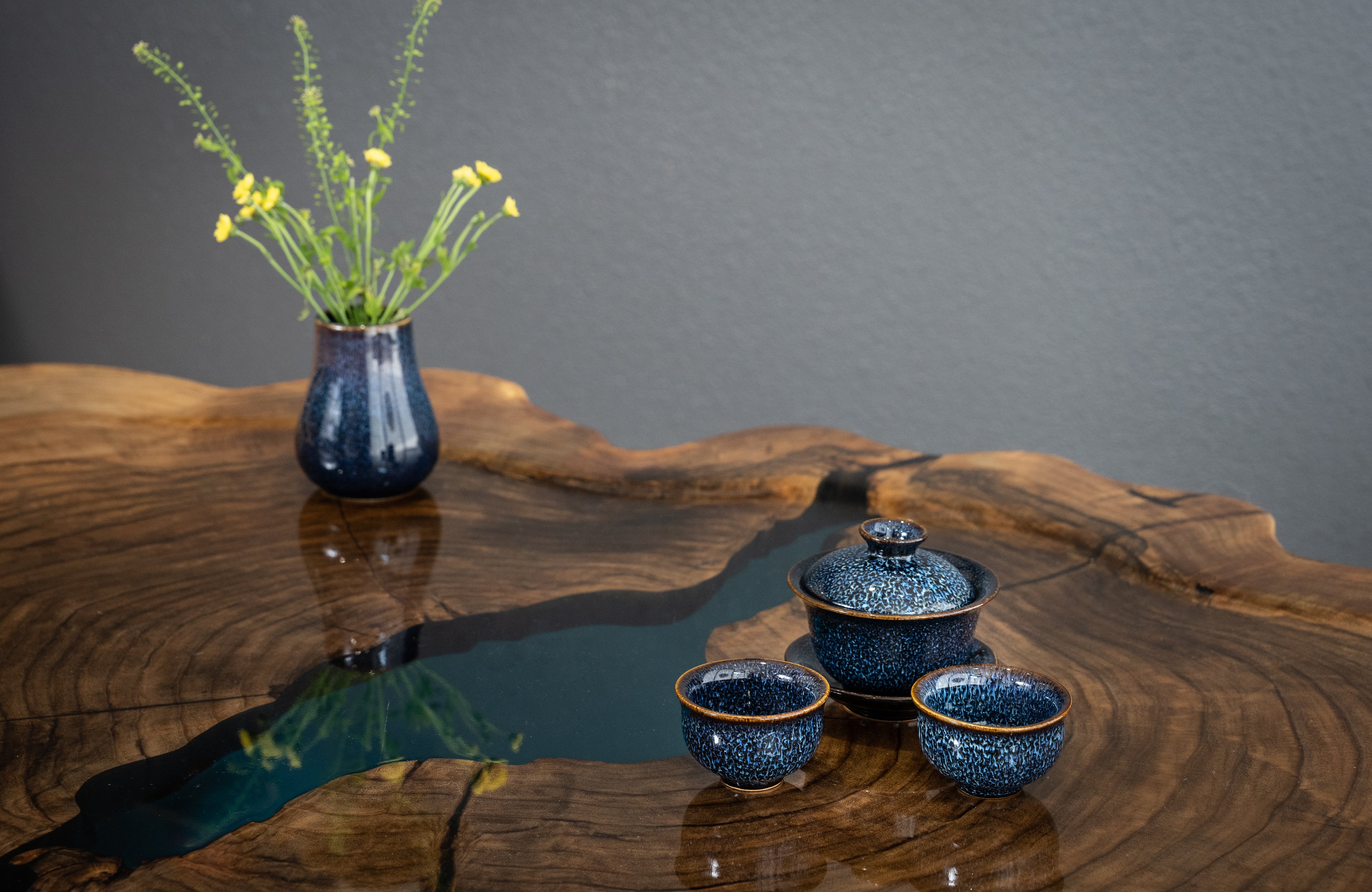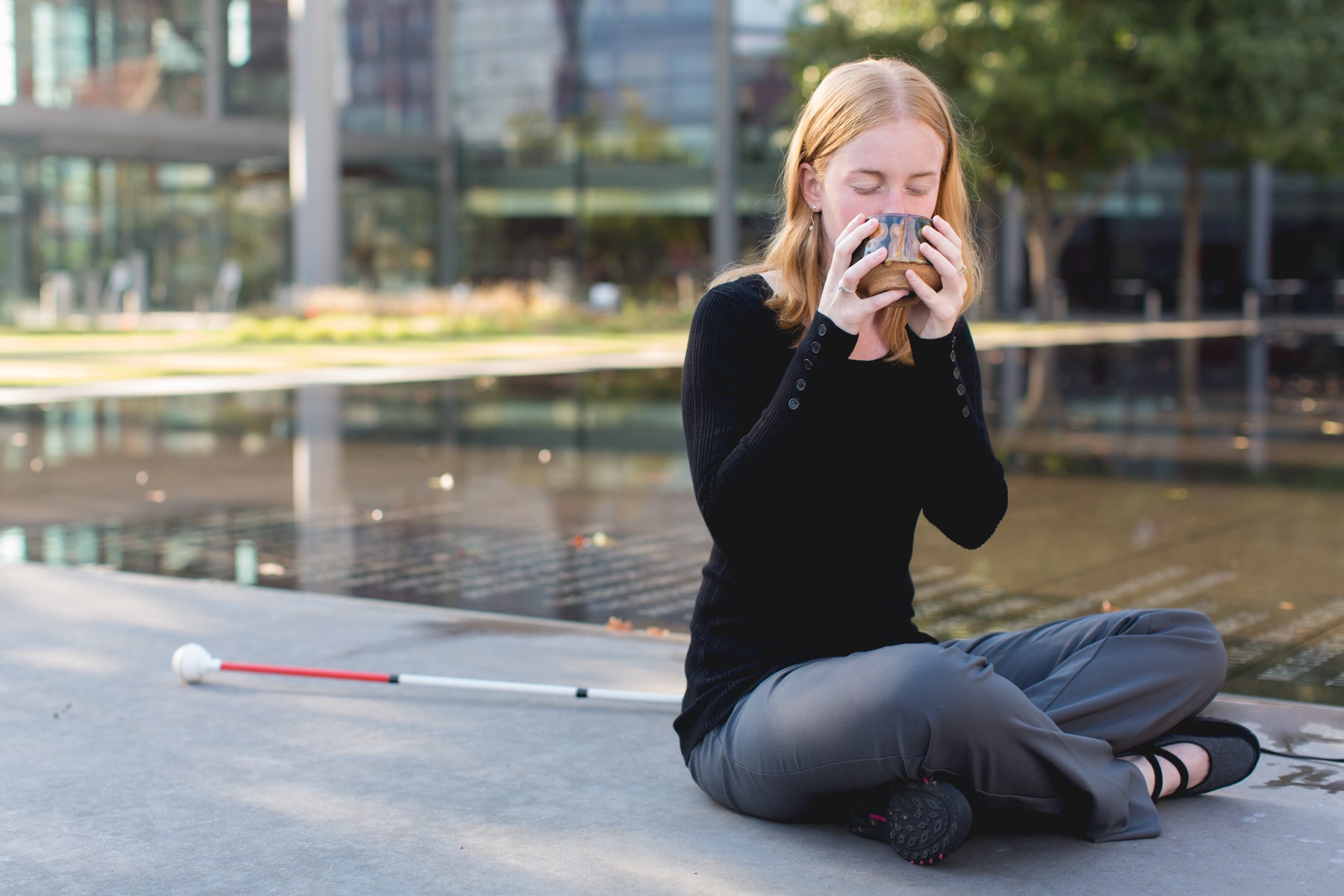What Is a Gaiwan and Why Do You Need One?

As a Texas-raised tea drinker, for many years I had one definition of tea: iced, black, with lemon
and often times sugar. During a trip to Europe after college, I sipped on hot tea for the first
time, and upon returning learned to make tea “the right way”: Use a teapot, add a teaspoon of
leaves per cup of water to an infuser, add hot water, wait four to five minutes, and then enjoy
hot or iced. I had even graduated to the better-tasting, often flavored (like Earl Grey or peach)
loose leaves rather than teabags. While proud to have mastered this, I had tried to like other
tea types: green, oolong, and even white (what’s a “pu-erh”?) without much success. Even
black tea seemed to need lemon, sugar, or a flavoring of some kind due to the strong tendency
to taste astringent and/or bitter. While I strived to drink green tea for my health, I didn’t really
love it, and the other tea types? Mostly “bleh.”
As time went on, my background as a teacher led me to research sources of quality loose-leaf
tea as well as gain a better understanding of the differences in each tea type and how to best
prepare it. I found Kyle, Phil, and the excellent quality teas and education offered at The
Cultured Cup. My real “tea journey” had begun! While TCC became my “home base” for all
things tea, my love of travel led me to try other tea places while “on the road.”
Discovering A New Method of Steeping
On one trip far from Texas, I walked into a store that had been recommended in an article I had
read. Once inside, I was surprised by what I saw: a small sitting area, a rectangular table about
the size of a large TV tray, and on it what looked like a miniature tea set for Lilliputians! Tiny
teacups slightly larger than a silver dollar were sitting on the table, and what looked something
like a standard English teacup and saucer. This one was plain, though, and it had no handle. It
was also covered with a lid. I asked the lady what it was. She answered, “This is a gaiwan. This is
how to enjoy high-quality, full-leaf tea. You make a little bit of tea in it, then pour into the small
cups to drink.” I sat down, she poured some tea for me and a couple of others to sample from
the little cups, and then she re-infused the same leaves, and we had another round of tea. This
was repeated several times. I think she told me that I had started drinking on the second or
third infusion! In just a few sips, my understanding of how to brew and get the best out of
quality tea changed forever. I had just sampled a Mi Lan Xiang (“honey-orchid aroma,” a type of
Dan Cong oolong), and I had loved the honey-like sweetness, leaning toward peach, with a
distinct but oh-so-pleasant and cooling orchid note, and leading to a mouthwatering, long-
lasting finish! I learned that this tea’s flavor was all about the sourcing, cultivar, processing, and
brewing method. There was NO added flavoring. I bought a gaiwan, cups, some tea, a Gong Dao
Bei (a “fairness cup” into which all of the tea can be poured before pouring into cups so that
everyone gets the same tea taste) and brought it home to experiment. Unknown to me at the
time, this was my first experience of Gong Fu Cha which, roughly translated, means “tea with
skill.”
What Is a Gaiwan?
Why had I loved tea made this way? Once home, I began playing with the gaiwan, which
literally means “lid-bowl,” to make tea. Today using a gaiwan is the main way the Chinese enjoy tea and has been since at least the Ming Dynasty (1368–1644). Originally, using a small version
of a tea bowl that could brew the newly-popular loose-leaf teas (instead of compressed cakes
or powdered teas that were previously in style), one would place the leaves in the bowl, pour
hot water over them, and then cover with the lid and start sipping. The bowl was used both for
brewing and drinking. Nowadays, the bowl is mostly used for preparing the tea, which is then
poured into cups. Most modern gaiwans also have a saucer into which the bowl sits, serving as
a drip tray. The rounded bowl shape allows the leaves plenty of room to infuse (without the
need for a separate infuser) and release their complex flavors. Instead of placing a small
amount of tea into a large teapot, you place a relatively large amount into the small bowl.
Rather than brewing the leaves for 3–5 minutes or longer, you brew them a much shorter
time—as little as 15 seconds, depending on the shape of the leaf (rolled leaves take longer to
release flavor than twisted ones do). The lid allows one to keep the leaves covered for steeping,
yet it also acts as a leaf filter and perfect pouring spout for decanting your tea into either cups
or a Gong Dao Bei. You can even use the lid to stir the leaves and/or smell the aroma of the
infusing leaves. Perfect simplicity! Eureka!
Advantage of Making Tea in a Gaiwan
The real advantage I discovered in using a gaiwan is the end result—the taste. High-quality
gaiwans are made of porcelain, which doesn’t add or subtract anything from the tea’s flavor.
While one may prefer steeping certain teas in a Yixing clay pot (dark oolongs or sheng pu’ers,
for example), which can enhance certain flavor notes, a porcelain gaiwan is perfect for sampling
any full-leaf tea and making sure you’re getting its true flavor. By brewing with more leaf
(usually 1–2 grams per ounce of water, depending on the tea) and for much shorter times than
Western-style brewing, the best qualities of the leaves are accentuated: sweet, floral, fruity
notes, with lots of complexity, while limiting the astringency/bitterness that comes out with
more time. And because you’re starting with lots of leaves and infusing them for a very short
time, you can re-infuse them multiple times (often five or more times) by adding 5–10 seconds
to the steep each time. The flavor for most teas tastes best on the second or third infusion and
then slowly fades. It’s a whole different way of tasting naturally-processed teas (meaning all the
flavor is in the leaf and how it is processed—nothing added) compared to what I had known,
releasing flavor notes I never knew were there for almost every tea I tried.
But is this method practical? What about at the office? If you have a gaiwan, cups (and if you
like, a Gong Dao Bei), and a proper kettle (one that has different temperature settings and a
hold function, which allows you to maintain a certain temperature for multiple steepings), the
answer is a resounding yes! All you need is a little room for this setup, and you and your co-
workers can enjoy tea all day, with a much shorter brew time compared to Western-style. If
you’re as crazy about this method as I now am, you can even purchase a small travel set with a
gaiwan and nesting cups (and sometimes a Gong Dao Bei), which fit into a pouch. Take a
thermos of hot water with you, and “off you go” to the park or wherever.
Using a Gaiwan
For many, handling a gaiwan’s three separate pieces (lid, bowl, and saucer) for the first time
can be daunting. After infusing the leaves, covering them with the lid, and waiting a bit, how do
I pour out the tea without spilling it and/or burning myself? With practice, I have learned a few
helpful hints: First, make sure you have a gaiwan sized to your hand. I recommend a normal size (4–6 oz) for most folks. If you have bigger hands or if you have more experience and want to
make more tea, a larger size is fine. Next, when infusing your tea, don’t pour water all the way
up to the bowl’s rim. Leave about a quarter inch from the top so that the rim doesn’t get too
hot to handle. Also, if you’re using small or cut leaves, using a small strainer (which sits on top
of your Gong Dao Bei or cup, and some are made just for this type of brewing) helps to keep the
leaves from getting into your cup. And finally, start with the easier method of holding a gaiwan:
After setting the lid just off center to leave a gap on the side you plan to pour, use two hands to
grab the gaiwan by the bottom of the saucer, with your thumbs resting on the top of the lid.
Then slowly lift and tilt into your cups or Gong Dao Bei. Once comfortable with this method,
you can try the more traditional way of using one hand: Place the thumb and third/fourth finger
on either side of the bowl’s rim, with the index finger resting on the lid, and then lift (just the
bowl and lid, not the saucer) and pour. With practice, you’ll be a convert in no time. :)
And the results? For me, though I still brew Western-style for certain circumstances, there’s no
going back!
Sources:
The Classic of Tea or Cha Jing, by Lu Yu. Trans. Michelle Huan, et al., found in Global Tea Hut
magazine, September 2015, pp.29-64
The Story of Tea: A Cultural History and Drinking Guide, by Mary Lou Heiss and Robert J. Heiss.
Ten Speed Press, 2007




Comments